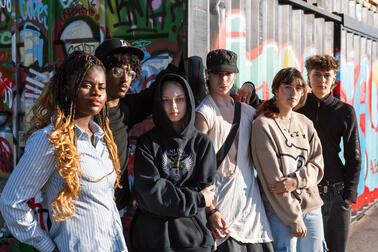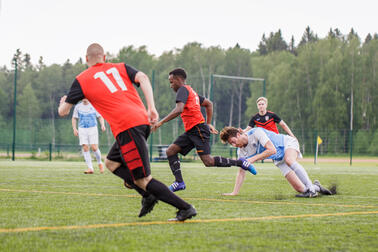
In early 2022, the City of Helsinki reserved a total of EUR 70 million for the reconstruction needs caused by COVID-19 for the period 2022–23. Of this coronavirus recovery aid, EUR 8 million was allocated to the Culture and Leisure Division. In October this year, the Division carried out an impact assessment aimed at examining how it has succeeded in getting the residents of Helsinki to return to its services and creating job opportunities in severely affected sectors.
“The appropriation has helped strengthen the COVID-19 recovery of city residents and increase their activity and well-being. The pandemic had a particularly major impact on children, young people and older people, in addition to narrowing job opportunities in the field of culture. The appropriation has allowed us to provide support and allocate grants to these groups in particular,” says Acting Head of the Culture and Leisure Division Kirsti Laine-Hendolin.
The Division’s various cultural and other events recorded approximately 230,000 visitors during the assessment period of 2022–23, in addition to which the coronavirus recovery aid helped establish approximately 200 additional activity groups in accordance with the Finnish model for leisure activities. Furthermore, the recovery aid allowed a total of over 600 professionals and other actors in the field of culture and art to work on and participate in event productions.
Laine-Hendolin is particularly pleased with the fact that the appropriation has made it possible to increase the resources of youth work.
“Young people were one of the groups that suffered the most as a result of the pandemic. Luckily the appropriation allowed us to organise a number of projects that have facilitated and increased encounters with young people and increased multidisciplinary cooperation for the benefit of young people. In addition to these measures, we increased the opportunities of young people to gain work experience by offering summer and gig jobs and traineeships to approximately 1,200 young people. We were also able to expand the School PT service, which provides low-threshold sports guidance to young people of lower secondary school age, from 27 to 48 schools and increase the number of customers using the service by over a hundred,” Laine-Hendolin summarises.
The fact that older people were staying at home and subsequently getting less exercise and being less active was also noted during the pandemic. “The coronavirus recovery aid allowed us to revive our Culture Companion service, which involves volunteers accompanying older people to cultural events. As a result, we recorded a total of approximately 500 Culture Companion gigs during 2023. In addition to this, we trained 127 volunteer peer instructors, which in turn increased peer-led low-threshold exercise activities in each major district. This will significantly increase the opportunities of older people to exercise together in different parts of Helsinki,” Laine-Hendolin continues.
Of the EUR 8 million allocated to the Culture and Leisure Division, approximately EUR 2 million was distributed as grants. Based on the impact assessment, the separately issued grants and general increases to existing grants have helped to promote and safeguard the continuity of communities’ and operators’ activities and their development following the pandemic.


